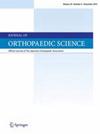Action protocol of medical staff for airway obstruction after anterior cervical spine surgery: A systematic review of case reports
IF 1.5
4区 医学
Q3 ORTHOPEDICS
引用次数: 0
Abstract
Background
Postoperative airway obstruction after anterior cervical spine surgery (ACSS) can be a fatal complication. Occasionally, it rapidly progresses to complete obstruction. There are no established standardized protocols on how medical staff should assess for signs and symptoms, seek help, or facilitate airway management after ACSS to prevent unfavorable events. This study aimed to primarily describe a systematic approach by assessing the signs and treatment outcomes of airway compromise in patients who underwent ACSS. Further, it recommended an action protocol after extubation for medical staff according to patients’ symptoms to prevent unfavorable outcomes.
Methods
An extensive literature search was performed on PubMed, Web of Science, and the Cochrane Library to identify case reports, case series, and cohort studies restricted to English and published between January 1990 and March 2023. We included cases that described the signs, symptoms, and treatment of airway obstruction after ACSS. Meanwhile, cases involving complications of other known causes, cases of trauma or occipital-cervical fixation, or those using bone morphogenetic protein were excluded.
Results
Twenty cases from 17 studies were obtained, and their study quality was acceptable. Four patients died, and two presented with hypoxic ischemic encephalopathy. Further, five of six patients had fatal complications that initially developed within 7 h after surgery. Then, 9 (69%) of 13 patients with evidence of hematoma (69%) showed initial symptoms within 12 h after surgery. Finally, 9 of 11 patients with early-stage symptoms had favorable outcomes, and patients who developed late-stage symptoms commonly had unfavorable outcomes.
Conclusion
The early identification of signs and symptoms and immediate treatment are important, particularly within 12 h postoperatively. We suggest a novel action protocol for medical staff according to symptom urgency, which includes the measurement of neck circumference using a string for evaluating neck swelling.
颈椎前路手术后医务人员处理气道阻塞的行动方案:病例报告的系统回顾。
背景颈椎前路手术(ACSS)后气道阻塞是一种致命的并发症。偶尔,它会迅速发展为完全阻塞。对于医务人员在ACSS后应如何评估体征和症状、寻求帮助或促进气道管理以防止不良事件,目前尚无既定的标准化方案。本研究旨在通过评估ACSS患者气道损害的体征和治疗结果,主要描述一种系统的方法。此外,它还建议医务人员根据患者的症状制定拔管后的行动方案,以防止不良后果。方法在PubMed、Web of Science和Cochrane Library上进行广泛的文献检索,以确定1990年1月至2023年3月间发表的病例报告、病例系列和队列研究。我们纳入了描述ACSS后气道阻塞的体征、症状和治疗的病例。同时,排除其他已知原因的并发症、外伤或枕颈固定或使用骨形态发生蛋白的病例。结果共纳入17篇文献20例,研究质量可接受。4例死亡,2例表现为缺氧缺血性脑病。此外,6名患者中有5名在术后7小时内出现了致命的并发症。13例有血肿证据的患者中有9例(69%)在术后12小时内出现初始症状。最后,11例早期症状患者中有9例预后良好,而出现晚期症状的患者通常预后不良。结论早期发现症状和体征并及时治疗是重要的,尤其是术后12 h内。我们建议医务人员根据症状的急迫性采取一种新的行动方案,其中包括用绳子测量颈部围度来评估颈部肿胀。
本文章由计算机程序翻译,如有差异,请以英文原文为准。
求助全文
约1分钟内获得全文
求助全文
来源期刊

Journal of Orthopaedic Science
医学-整形外科
CiteScore
3.00
自引率
0.00%
发文量
290
审稿时长
90 days
期刊介绍:
The Journal of Orthopaedic Science is the official peer-reviewed journal of the Japanese Orthopaedic Association. The journal publishes the latest researches and topical debates in all fields of clinical and experimental orthopaedics, including musculoskeletal medicine, sports medicine, locomotive syndrome, trauma, paediatrics, oncology and biomaterials, as well as basic researches.
 求助内容:
求助内容: 应助结果提醒方式:
应助结果提醒方式:


